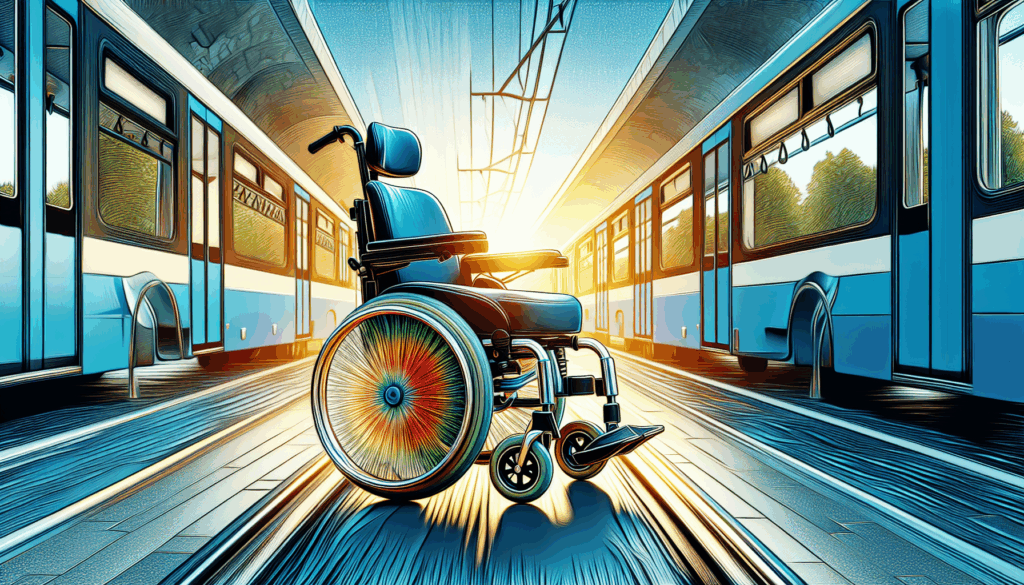
In the rapidly evolving world of mobility solutions, electric wheelchairs have emerged as a game changer for individuals seeking independence and ease of movement. Among the many options available, Edegree offers two standout models: the EW6 electric wheelchair and the EW1 electric wheelchair. Each of these electric wheelchairs has its unique features and specifications that cater to varying needs and preferences. Whether it’s the improved range per charge, battery type, or climbing ability, understanding the differences between the Edegree EW6 and EW1 can significantly influence your choice. Let’s delve deeper into the specific attributes and capabilities of these remarkable electric wheelchairs to help you make an informed decision.
Overview of Edegree Electric Wheelchairs
Edegree electric wheelchairs, designed for varying user needs, showcase two notable models: the EW6 and EW1. Both options emphasize mobility and independence but differ significantly in features and specifications. The Edegree EW6 is equipped with a lightweight design, weighing only 14.8 kg, and offers a range per charge between 10 to 15 km, making it ideal for short journeys and urban commuting. Its advanced lithium battery allows for a faster response time, with a top forward speed of 8 km/h and an impressive dual motor system ensuring smooth operation.
Conversely, the EW1, while heavier at 38 kg, boasts a longer range of 20 km on a single charge, thanks to its lead-acid battery. This model is designed for users requiring more distance coverage, albeit at a slightly reduced speed of up to 6 km/h. Both models feature five-speed modes and can handle loads up to 100 kg, catering to various user weights. Notably, the EW6 offers a greater climbing ability of less than 10°, making it more suitable for varying terrains, whereas the EW1 has a better climbing capacity of up to 13°.
Each model presents unique benefits depending on the user’s needs, whether prioritizing portability or extended range, crucial factors to consider when selecting an electric wheelchair for enhanced mobility.
Battery Specifications: EW6 vs EW1
When comparing the battery specifications of the Edegree EW6 and EW1 electric wheelchairs, there are notable distinctions that can affect user experience and efficiency. The Edegree EW6 is powered by a lithium battery with a size of 24V 10AH, which provides a range per charge of 10-15 km. It requires a charging time of 6 to 8 hours, and its lightweight design, weighing 14.8 kg, makes it easier to manage.
Additionally, the dual motor system of the EW6 delivers a robust performance with speeds up to 8 km/h, making it a suitable option for those who prioritize agility and speed, especially in urban settings. The EW6’s battery type ensures better longevity and less frequent maintenance compared to lead-acid batteries.
Conversely, the Edegree EW1 employs a lead-acid battery, also with a size of 24V 10AH, offering a slightly longer range of 20 km per charge. However, it takes just 6 hours to recharge. Weighing significantly more at 38 kg, the EW1 accommodates the same maximum load of 100 kg but has a lower maximum forward and reverse speed of 6 km/h. The lead-acid battery, while cost-effective, may require more upkeep over time compared to the lithium option. Therefore, users must weigh these battery specifications carefully when deciding between the EW6 and EW1 for their electric wheelchair needs.
Range Per Charge: Which Model Lasts Longer?
When it comes to the range per charge, the Edegree EW1 clearly outshines the Edegree EW6. The EW1 offers an impressive range of 20km on a single charge, thanks to its robust lead-acid battery. This makes it ideal for longer outings, allowing users to cover more distance without the need for frequent recharging. On the other hand, the EW6 has a more modest range of 10-15km per charge, which is adequate for short trips or commutes but may limit the user in terms of overall mobility and exploration. Thus, for individuals who prioritize extended travel time, the EW1 serves as a better option in the market of electric wheelchairs.
However, it’s essential to consider factors beyond just the range. While the EW1 might offer a longer distance, the EW6 is equipped with a faster forward speed of 0-8km/h, allowing users to cover their specified distance relatively quickly. Furthermore, the EW6 weighs less at 14.8kg, compared to the 38kg of the EW1, making it more portable. In conclusion, each model has its strengths, but the choice ultimately depends on the user’s specific needs for travel distance and convenience when selecting an electric wheelchair.

Speed Capabilities: A Closer Look
When comparing the speed capabilities of the Edegree electric wheelchairs EW6 and EW1, both models present unique features that cater to different user needs. The Edegree EW6 boasts a forward and reverse speed range of 0-8 km/h, providing users with a faster option for getting around. This is particularly useful for individuals seeking to navigate through crowded spaces or cover distances quickly. Additionally, the EW6 is equipped with a dual motor 24v190w brushless motor, making it not only quicker but also more efficient in its performance, which reinforces its suitability for those who prioritize speed in their mobility solutions.
On the other hand, the Edegree EW1 operates at a slightly lower speed, with a forward and reverse speed range of 0-6 km/h. While it may be slower than the EW6, the EW1 features a more powerful dual motor at 24v250w, which aids in providing a capable performance, especially in inclined areas with a climbing ability of up to 13 degrees. This can appeal to users who may prioritize stability and control over speed, especially on varying terrains. Hence, the choice between these two electric wheelchairs can greatly depend on the individual’s lifestyle and mobility needs.
Climbing Ability: Navigating Different Terrains
When it comes to navigating various terrains, the climbing ability of an electric wheelchair is a crucial factor to consider. The Edegree EW1 showcases a commendable climbing capability, supporting inclines of up to 13 degrees. This makes it suitable for users who may encounter more hilly environments, ensuring smoother transitions over uneven surfaces. The robust dual motor of the EW1, rated at 24v250w, enhances its performance by providing adequate power to tackle steeper inclines without compromising safety or stability. Given its weight of 38kg, users can rely on this model for a steady uphill experience.
In comparison, the Edegree EW6 has a slightly lower climbing capability, supporting slopes up to 10 degrees. While it may not handle steep elevations as effectively as the EW1, it offers notable features that compensate for this limitation. The EW6’s dual motor configuration also enhances its overall performance, with a lower powerful motor output of 24v190w. This model, weighing 14.8kg, is still optimized for a smooth ride on a variety of terrains, making it a solid choice for users who prioritize portability alongside functionality. Each model has its unique strengths, catering to different user needs in diverse environments.
Weight and Load Capacity: Practical Considerations
When choosing between the Edegree EW6 and EW1 electric wheelchairs, weight and load capacity play significant roles in determining practicality and usability. The EW6 is notably lighter, weighing in at 14.8kg with the battery, making it easier to maneuver and transport, especially for users who may require assistance. In contrast, the EW1’s weight is considerably heavier at 38kg, which could pose challenges for lifting and could limit its accessibility for some users. Both models have a maximum load capacity of 100kg, which means that while the EW1 is bulkier, it can support similar weight, but the ease of handling the EW6 can greatly enhance the user experience.
Furthermore, the benefits of lighter weight extend beyond transportation; they also contribute to easier daily usage. The reduced weight of the EW6 allows for easier navigation in tight spaces, which can be crucial in urban environments or cramped areas. For users who travel frequently or need a chair that can withstand various scenarios throughout the day, the ease of the EW6 is a compelling factor to consider. Ultimately, while both the EW6 and EW1 cater to individuals up to 100kg, the choice between them hinges largely on the importance of weight and transportability for potential users.
Motor Performance: Understanding Dual Motors
When it comes to electric wheelchairs, the motor performance of models can greatly influence their efficiency and usability. The Edegree EW6 features a dual motor with a 24V 190W brushless motor, which allows it to operate smoothly across various terrains. This wheelchair boasts a forward and reverse speed of up to 8 km/h, making it ideal for users needing quick mobility without compromising stability. Moreover, the EW6 has a climbing ability of less than 10 degrees, which means it can handle slight inclines, providing users with more flexibility in their environments. Its 5-speed mode adds to its versatility, allowing users to adjust for comfort and mobility needs.
In contrast, the Edegree EW1 is equipped with a more powerful dual motor, featuring a 24V 250W configuration. This results in a slightly lower maximum speed of 6 km/h for both forward and reverse. However, it compensates for this with an impressive climbing ability of 13 degrees, making it more adept at handling steeper inclines. The EW1 also has a user-friendly 5-speed mode, allowing users to fine-tune their speed for different situations. Ultimately, while both models deliver reliable performance, the choice between the EW6 and EW1 will depend largely on personal preferences for speed, climbing capabilities, and overall motor efficiency.

Choosing the Right Edegree Electric Wheelchair for Your Needs
In conclusion, both the Edegree EW6 and EW1 electric wheelchairs offer unique features that cater to different user requirements. The EW6 is ideal for individuals needing a lightweight option with a good range for shorter trips, while the EW1 might be a better choice for those looking for a more robust model with a greater range per charge. Understanding your personal mobility needs will significantly influence your decision as both models emphasize comfort, safety, and versatility.
Furthermore, the decision should take into account not just the specifications such as speed, weight, and gradeability but also how each wheelchair fits into your lifestyle. Whether you prefer the nimble maneuverability of the EW6 or the durability of the EW1, both electric wheelchairs symbolize a step forward in providing sustainable mobility options. Investing in an electric wheelchair is not just about enhancing mobility; it’s about reclaiming independence and improving the quality of life.

I’d like to see a comparison of the EW series with other wheelchair brands. This would give a more comprehensive view of the market.
Thank you for taking the time to share your feedback, Kavin! We appreciate your suggestion and would be more than happy to collaborate with other wheelchair brands to provide a more comprehensive comparison. However, please note that we focus on empowering bicycle, ebike, and escooter enthusiasts through affordability, quality products, professional servicing, and forging communities. If you’d like to explore a comparison between the EW series and other electric wheelchairs, please don’t hesitate to reach out to us at [email protected] or call us at +60 3-7890 3042. We’re here to help and provide guidance.
The blog highlights the key differences between EW6 and EW1, but it would be helpful to have a side-by-side comparison table for easier reference.
Thank you for your feedback, Dian Nor! We appreciate your suggestion to include a side-by-side comparison table to make it easier for our readers to reference the key differences between the EW6 and EW1 electric wheelchairs. Unfortunately, we are a supplier and blog writer being called Eko Life Malaysia, our focus is not on displaying comparative tables, however, if you require further information you can easily contact us through [email protected] or +60 3-7890 3042. We’re always looking for ways to improve our content and value your input!
The comparison between EW6 and EW1 electric wheelchairs is informative. However, I wish the blog included actual user reviews to provide more insights.
Hi Eva, thank you for your comment! We appreciate your interest in the actual user reviews. While we didn’t include user reviews in this blog post, we would like to invite you to visit our official store where you can find reviews and feedback from customers who have purchased the Edegree EW6 and EW1 electric wheelchairs. If you need assistance or would like to share your own experience with our products, please don’t hesitate to contact us at [email protected] or +60 3-7890 3042. We value your feedback and look forward to hearing from you.